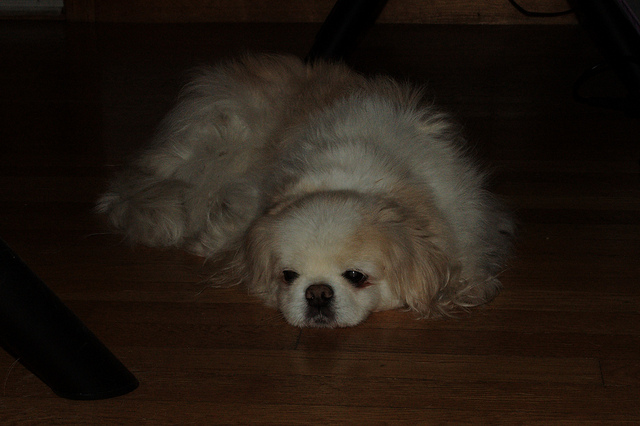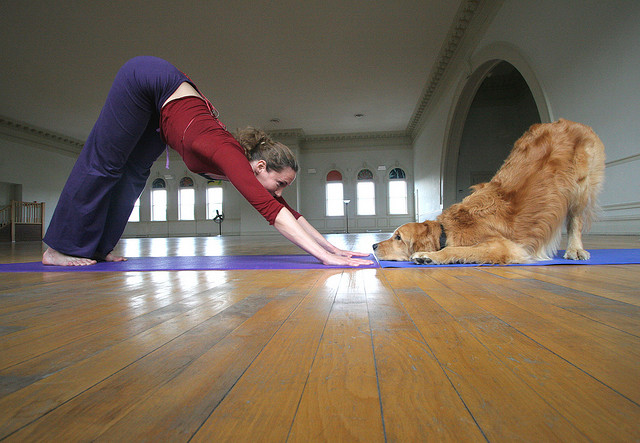 By the time a puppy has reached 8 to 12 weeks they should be socialized, have their first round of shots and already be eating solid foods. This is the perfect age to bring a new puppy into your home. The most important thing to do after selecting the right age to adopt a furry friend is check out the pup, nose to tail, to make sure they are as healthy as can be.
By the time a puppy has reached 8 to 12 weeks they should be socialized, have their first round of shots and already be eating solid foods. This is the perfect age to bring a new puppy into your home. The most important thing to do after selecting the right age to adopt a furry friend is check out the pup, nose to tail, to make sure they are as healthy as can be.
Symptoms of Eye Problems in Dogs – If your dog has matter in his eye or if the eye waters, if the dog blinks, squints, paws at the eye, and gives evidence that the eye is painful, or if the eye appears red, the dog has an eye problem. You must examine the eye and attempt to determine the cause.Begin by examining the head. The nose should be cool and moist. Nasal discharge or frequent sneezing is a sign of poor health. Brachycephalic breeds, such as Pugs and Pekingese, often have nostrils that collapse when the dog breathes in. This is undesirable.
Check the puppy for a correct bite. The correct bite for most breeds is a scissors bite, in which the upper incisors just slightly overlap the lower ones. An even bite, in which the incisors meet edge to edge, is equally acceptable in most breeds.
The gums should be pink and healthy looking. Pale gums suggest anemia, possibly caused by intestinal parasites.
Feel for a soft spot on the dome of the skull. If present, the fontanel is open. This is not desirable. In toy breeds, an open fontanel can be associated with hydrocephalus.
The eyes should be clear and bright. If you see tear stains on the muzzle, look for eyelids that roll in or out, extra eyelashes, or conjunctivitis. The pupils should be dark and have no visible lines or white spots that may indicate congenital cataracts or retained fetal membranes. The haw (third eyelid) may be visible. This should not be taken as a sign of disease unless it is swollen and inflamed.
The ears should stand correctly for the breed, although in some breeds, such as German Shepherd Dogs, the ears may not stand up fully until 4 to 6 months of age. The tips should be healthy and well furred. Crusty tips with bare spots suggest a skin disease such as sarcoptic mange. The ear canals should be clean and sweet-smelling. A buildup of wax with a rancid odor may be caused by ear mites. Head shaking and tenderness about the ears indicate an ear canal infection.
Feel the chest with the palm of your hand to see if the heart seems especially vibrant. This could be a clue to a congenital heart defect. The puppy should breathe in and out without effort. A flat chest, especially when accompanied by trouble inhaling, indicates an airway obstruction. It is seen most commonly in brachycephalic breeds such as Pugs, Boston Terriers, and Pekingese.
A healthy coat is bright and shiny and has the correct color and markings for the breed. In long-coated breeds, the puppy coat may be fluffy and soft without a lot of shine. Excess scratching and areas of inflamed skin suggest fleas, mites, or other skin parasites. “Moth-eaten” areas of hair loss are typical of mange and ringworm.
The final thing to check out on a puppy is their actual structure and stability. Make sure they have a straight form when standing and they are not bow legged or too wobbly. Make sure they run straight as well and have no limps as it may not be an injury but hip dysplasia or possibly other joint and knee problems.
Now that you have a checklist do you feel more confident about selecting a new puppy? What kind of pup does your family want?





Leave a Reply